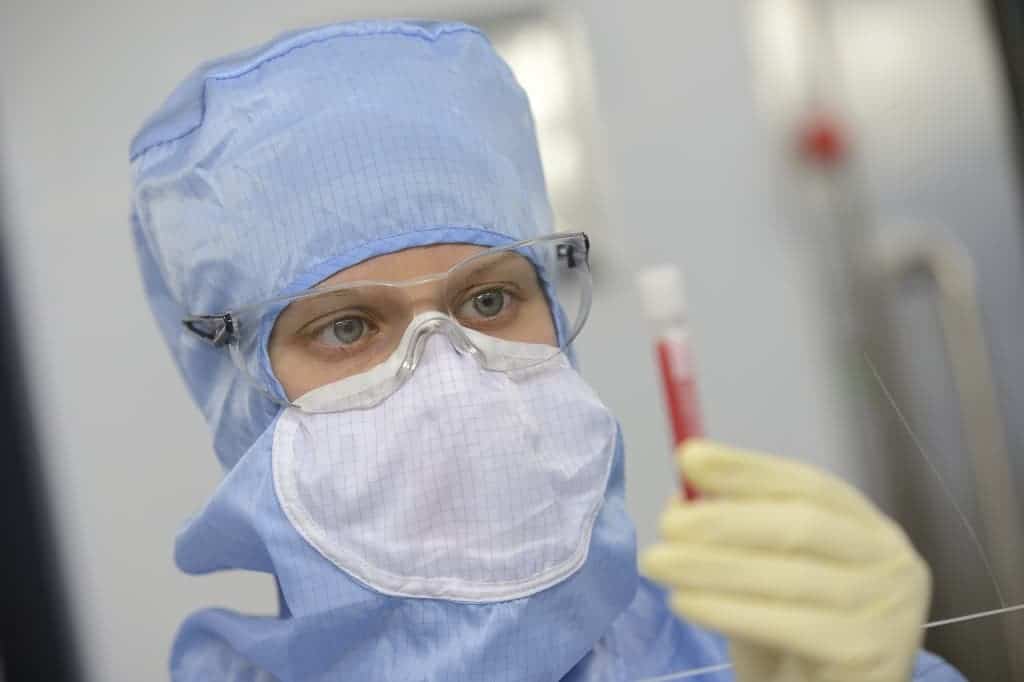
After Pfizer and BioNTech reported a coronavirus vaccine candidate with 90% efficacy, now, just a week later, Moderna has announced that its vaccine also prevents the dreaded illness. In a statement released today, Moderna said interim analysis of its Phase 3 shows the experimental vaccine is 94.5% effective at preventing COVID-19, beating even the most optimistic estimates.
“It’s extremely good news. If you look at the data, the numbers speak for themselves,” said Anthony S. Fauci, director of the National Institute of Allergy and Infectious Disease. “I describe myself as a realist, but I’m fundamentally a cautious optimist. I felt we’d likely get something less than this. … I said certainly a 90-plus-percent effective vaccine is possible, but I wasn’t counting on it.”
The vaccine could enter an emergency-use approval process by Thanksgiving.
Strength in numbers
Both Pfizer and Moderna used the same technology to make their vaccines. In fact, these are the very first vaccines based on messenger RNA, a single-stranded molecule of RNA that codes genetic instructions for the production of proteins inside cells. In this particular case, the mRNA has a code that produces the coronavirus’ telltale spike protein, which it uses to latch onto cells and ultimately infect them. By producing just this spike protein without any trace of the virus itself, the body’s immune system starts producing antibodies so that it is primed against the coronavirus once it eventually comes into contact with us.
Moderna scientists took a gamble with this experimental technology, and it seems to have paid off. Its Phase 3 trial — the final study of a vaccine meant to establish safety and efficacy before it can be reviewed for approval — involved 30,000 volunteers, half of whom received two injections of the mRNA vaccine 28 days apart, while the other half got two shots of a placebo. The company enrolled a diverse group of participants, including 6,000 enrollees who identified as Hispanic and more than 3,000 participants who identified as African-American, as well as 7,000 participants older than 65 and 5,000 who suffer from at least one chronic disease.
The study recorded 95 cases of COVID-19 among the study participants, only five of which were in the vaccinated group. Of the 90 positive cases in the placebo group, 11 were cases of severe disease.
These results haven’t been peer-reviewed, nor are they final as this is still on ongoing study. As such, the overall effectiveness of the vaccine may change in the future, although that shouldn’t happen by a wide margin. However, an independent committee convened by the National Institute of Health (NIH) was briefed about the results since Sunday morning, and it found the results promising.
The reported efficacy of 94.5% is slightly better than Pfizer’s reported 90% efficacy. What’s more, Moderna’s vaccine can be stored at just -4 degrees Celsius (-25 degrees Fahrenheit), whereas the Pfizer vaccine requires ultracold storing temperature of -70 degrees Celsius (-94 degrees Fahrenheit). As a result, Moderna’s vaccine will be a lot more accessible and easier to distribute, especially for developing nations lacking in infrastructure.
On the flipside, Pfizer already expects 50 million doses to be delivered by the end of 2020, with another 1.3 billion by the end of 2021, whereas Moderna projects it can produce just 20 million doses by the end of the year. By the end of next year, Modern aims to produce 500 million doses with the possibility of scaling up to 1 billion depending on production capacity and the availability of raw materials.
Production is also dependent on how fast Moderna’s mRNA vaccine will be approved. Moderna CEO Stéphane Bancel said it’ll be November 25 at the earliest before the company can seek an emergency nod. There’s a bit of uncertainty since the emergency-use authorization can only commence once the trial is completed, or when 151 cases of COVID-19 are recorded in the study. But considering the surge of coronavirus cases in the United States, this might not take more than a week.
This year, the U.S. government pledged $10 billion through its Operation Warp Speed initiative to develop and deliver 300 million doses of a safe and effective coronavirus vaccine by January 2021. This means a vaccine development target of less than a year. For comparison, the typical vaccine takes 10 to 15 years to develop.
In many ways, this is the Apollo era of vaccines, with billions pouring in from all corners of the globe in an attempt to save the world from the pandemic. Moderna received $1.5 billion from the federal Operation Warp Speed program so far in order to ramp up its production and hasten R&D.


